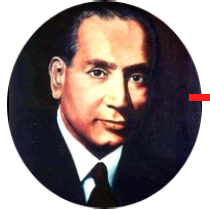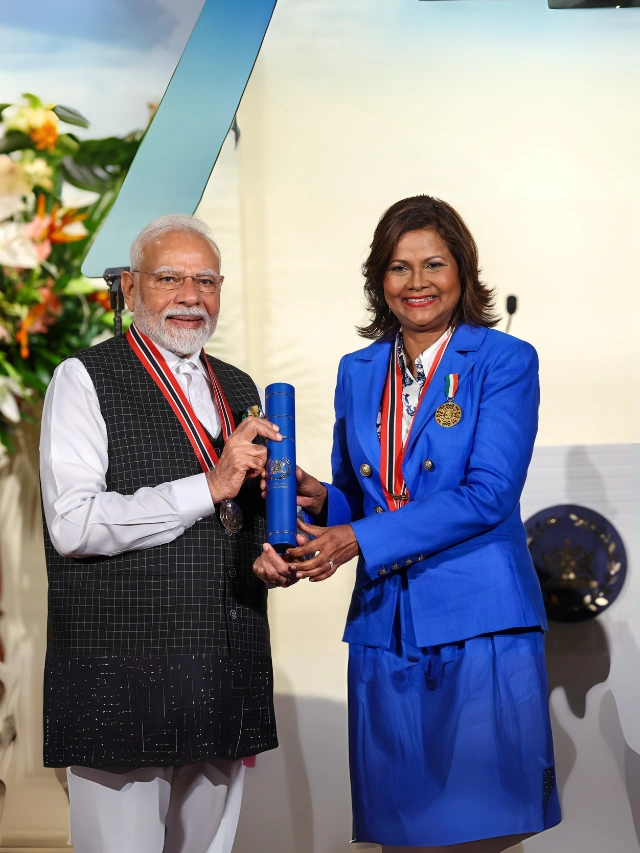
Birbal Sahni
Birbal Sahni was an Indian paleobotanist and geologist who made significant contributions to the field of earth sciences during the early 20th century. He is widely regarded as one of the pioneers of paleobotany in India and his work on fossil plants remains highly influential to this day.
CEO’s | Actors | Politicians | Sports Stars
Early Life of Birbal Sahni
Birbal Sahni was born into an intellectually stimulating environment in Bhera, Shahpur District, currently part of Pakistan’s Punjab region, on November 14, 1891. He was the third offspring of Ishwar Devi and renowned Indian meteorologist Lala Ruchi Ram Sahni. The family, originating from Dera Ismail Khan, regularly visited Bhera, exposing young Birbal to the geological wonders of the nearby Salt Range and Khewra, likely fueling his early interest in science.
His grandfather, a banker and amateur chemist from Dera Ismail Khan, along with his father, a professor of chemistry in Lahore, played crucial roles in his scientific inclination. Birbal’s father, who had studied alongside eminent scientists like Ernest Rutherford and Niels Bohr, also took the family on extensive Himalayan expeditions, further stimulating Birbal’s fascination with nature and science.
Parents’ Name and Family
Birbal was born to Ishwar Devi and Lala Ruchi Ram Sahni, a pioneer in Indian meteorology. The family was deeply rooted in academia and activism. Their home often played host to iconic figures of the Indian independence movement, like Motilal Nehru, Gopal Krishna Gokhale, Sarojini Naidu, and Madan Mohan Malaviya, adding another layer of influence on young Birbal.
Personal Life
In 1920, Sahni married Savitri Suri, daughter of Sunder Das Suri, an Inspector of Schools in Punjab. Savitri was more than just a life partner; she actively participated in Sahni’s work, accompanying him on his academic journey.
Professional Life of Birbal Sahni
Sahni’s educational journey started at the Mission and Central Model School Lahore, Government College University, Lahore, and Punjab University. He then moved to England, graduating from Emmanuel College, Cambridge, in 1914, and later obtaining a D.Sc. from the University of London in 1919.
In his early career, Sahni worked alongside Professor Seward on a study of Indian Gondwana plants in England and briefly with German plant morphologist Karl Ritter von Goebel in Munich. Upon returning to India, Sahni served as a professor at Banaras Hindu University, Varanasi, and Punjab University before becoming the first Professor and Head of the Botany Department at Lucknow University in 1921.
His research work on the Bennettitalean plant and a new type of petrified wood, Homoxylon, was published in Palaeontologica Indica in 1932. His work not only gained him recognition but also attracted a pool of dedicated students, thereby establishing the University as the premier center for botanical and paleobotanical investigations in India.
In 1946, Sahni founded The Paleobotanical Society, which later established the Institute of Palaeobotany. Unfortunately, just a week after laying the foundation stone for the new building of the Institute by Prime Minister Jawaharlal Nehru in 1949, Sahni passed away due to a heart attack.
Awards and Recognitions
Birbal Sahni was a respected figure in the scientific community, both nationally and internationally. His lifelong work in paleobotany earned him the presidency of the National Academy of Sciences, India, and the honorary presidency of the International Botanical Congress in Stockholm. In recognition of his academic contributions, the University of Cambridge awarded him the Sc. D. degree in 1929.
Age
Birbal Sahni passed away on April 10, 1949, at the age of 57.
Summary:
Professor Birbal Sahni, born on November 14, 1891, in Bhera, West Punjab, came from a family with a strong academic and patriotic background. His mother believed in conducting auspicious ceremonies at their family house in Bhera, so the family often visited there during vacations. These visits sparked Birbal’s interest in Geology and Palaeobotany, as the nearby Salt Range offered plant-bearing formations and geological wonders. Professor Sahni made significant contributions to determining the geological age of this area later in his career.
Apart from being a scientist and scholar, Professor Sahni was a patriot and a deeply religious man, influenced by his father’s qualities of generosity and self-sacrifice. His father, Professor Ruchi Ram Sahni, was a renowned scholar and a social reformer focused on women’s emancipation. The Sahni family originally belonged to Dera Ismail Khan, an important trading town on the Indus River. However, due to financial setbacks and the death of his father, Professor Ruchi Ram Sahni had to leave the city at a young age.
Professor Sahni’s upbringing, including stories shared by his grandfather, shaped his character and determination. Despite the family’s move from a lavish mansion to a modest house and the loss of luxuries, Professor Ruchi Ram Sahni taught his son to remain resilient and optimistic. However, after his father’s death, living in Dera Ismail Khan became impossible for the Sahni family.
This summary highlights Professor Birbal Sahni’s family background, his early interest in geology, the influence of his father’s qualities, and the challenges faced by the Sahni family. It encapsulates the main ideas and details of the original content within the prescribed word limit.
FAQ
Why did Birbal Sahni leave Emmanuel College?
Birbal Sahni did not leave Emmanuel College; rather, he completed his studies there. He graduated from Emmanuel College, Cambridge, in 1914 and later earned his D.Sc. from the University of London in 1919. During his time in England, he worked with Professor Albert Charles Seward at Cambridge, which significantly influenced his future research in paleobotany.
Who influenced Birbal Sahni during his college days?
During his college days at Government College University in Lahore, Birbal Sahni was mentored by Professor Shiv Ram Kashyap, a renowned botanist. Later, at the University of Cambridge, he worked under Professor Albert Charles Seward, a prominent figure in paleobotany. These mentors profoundly shaped Sahni’s academic pursuits and research trajectory.
Where is the Birbal Sahni Institute of Palaeobotany located?
The Birbal Sahni Institute of Palaeosciences, formerly known as the Birbal Sahni Institute of Palaeobotany, is located at 53 University Road, Lucknow, Uttar Pradesh, India. Established in 1946 by Professor Birbal Sahni, the institute is dedicated to the study of plant fossils and related disciplines.
What is the life story of Birbal Sahni?
Born on November 14, 1891, in Bhera, Punjab (now in Pakistan), Birbal Sahni was the third child of Professor Ruchi Ram Sahni and Ishwar Devi. He developed an early interest in botany and pursued higher education at Government College University, Lahore. He later attended the University of Cambridge, earning his degree in 1914, and obtained his D.Sc. from the University of London in 1919. Upon returning to India, Sahni held academic positions at Banaras Hindu University and Punjab University before becoming the first Professor and Head of the Botany Department at Lucknow University in 1921. He founded the Institute of Palaeobotany in 1946, which was later renamed in his honor. Sahni made significant contributions to paleobotany and was elected a Fellow of the Royal Society in 1936. He passed away on April 10, 1949.
What was Birbal Sahni's educational background?
Birbal Sahni received his early education in Lahore, attending the Mission and Central Model Schools, followed by Government College University. He graduated from the University of Cambridge in 1914 and earned his D.Sc. from the University of London in 1919. His academic journey was marked by excellence and a deep commitment to the study of botany and paleobotany.
What were Birbal Sahni's major contributions?
Birbal Sahni made pioneering contributions to paleobotany, focusing on the study of Indian Gondwana plants. He described several fossil plants, including Williamsonia sewardi and Homoxylon rajmahalense. Sahni also played a crucial role in establishing the Institute of Palaeobotany in Lucknow in 1946, fostering research in plant evolution and geology. His interdisciplinary approach significantly advanced the understanding of India’s geological history.
Who was Birbal Sahni?
Birbal Sahni (1891–1949) was an Indian paleobotanist renowned for his research on plant fossils in the Indian subcontinent. He founded the Institute of Palaeobotany in Lucknow and was instrumental in advancing the study of plant evolution and geology in India. Sahni was elected a Fellow of the Royal Society in 1936, reflecting his significant scientific contributions.
What were Birbal Sahni's notable inventions?
While primarily a researcher, Birbal Sahni’s work led to the identification and description of several fossil plants, such as Williamsonia sewardi and Homoxylon rajmahalense. His meticulous studies provided insights into the morphology and taxonomy of ancient plants, enriching the understanding of India’s paleobotanical history.





